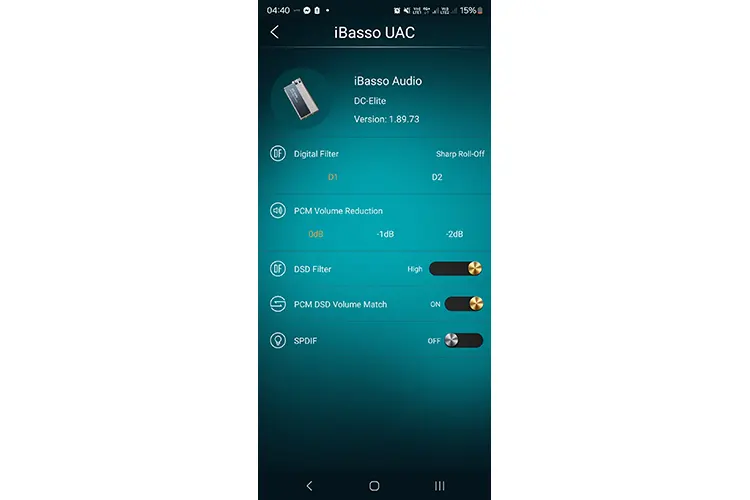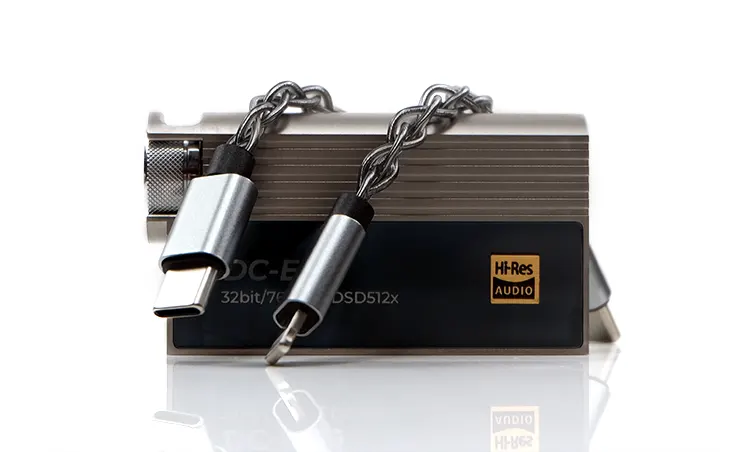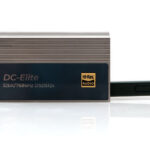Today, Marcus reviews the iBasso DC-Elite, a flagship DAC from ROHM that features a 24-step attenuator and output power of up to 280mW. It's priced at $449.
Disclaimer: This sample was sent to me in exchange for my honest opinion. Headfonics is an independent website with no affiliate links or status. I appreciate iBasso for this opportunity.
Click here to read more about iBasso Products We have already reviewed it previously on Headfonics.
Please note that this article follows our current scoring guidelines, which you can read in more detail here.
Many enthusiasts already call the iBasso DC-Elite DAC dongle a mini DX320 MAX Ti.
There are several reasons that lend credence to this “mini” description, including a true 24-step attenuator and the ROHM DAC itself. Reasons that make this flagship device a very exclusive, if expensive, proposition.
At $449, this is the most expensive device I've personally reviewed. Not only is it a strong competitor to other high-end devices, but it can also be a solid alternative to excellent DAPs like the one from iBasso. DX180.
My take? The DC-Elite is very well built, has a wonderfully dynamic and detailed sound, and is perhaps a little smoother sounding than its bigger brother, the flagship DX320 MAX Ti.
It is not the most powerful device on the market. That award goes to the FiiO KA17 and the GO Bar from iFi Audio.
Unfortunately I don't have any here to compare, but I'll take a look at how the DC-Elite stacks up against worthy competitors like the Cayin RU7Hello please FC6and the M15 Quest Style in my full review below.


Characteristics
The iBasso DC-Elite is a high-end dongle-style DAC featuring a single ROHM BD34301EKV chipset and no less than 6 op-amps capable of delivering up to 280mW of balanced output power and 120mW single-ended into 32Ω.
It is designed to connect via OTG to your iPhone (Lightning or USB-C) or Android smartphone (USB-C) to enjoy digital audio on the move or sit neatly on your desk as a USB-DAC connected to a PC or MAC.
This isn’t the first time iBasso has used ROHM chipsets, with no less than a quad-chip design in the DX320 MAX Ti and a dual one in the regular DX320. However, this is the first device I know of that uses a ROHM DAC.
The DC-Elite can decode up to PCM 32BIT/768kHz and DSD512 natively via USB. It can also output via coaxial cable with a maximum decoding rate of PCM 32BIT/768kHz.
As far as I know, the DC-Elite does not decode MQA, but it does get 2 digital filters from the ROHM chipset with access to a steep roll-off and a slow roll-off.
To top it off, this is the only dongle-style DAC currently on the market that uses a true 24-step, 4-wiper attenuator for volume control, offering a channel tolerance of +/- 0.1 dB between each step, rather than the industry norm of around +/- 2 dB.
On a portable level, this is a big change from traditional digital or relay volume-based systems, specifically in retaining dynamic range and channel balancing at low volume levels for sensitive equipment.
If you're concerned about the magnitude of the volume increase per step, you can combine the physical attenuator with the vastly improved iBasso UAC app and its PCM volume reduction option to reduce the steps by up to 2 dB.


Design
iBasso wasn’t far behind when it came to the design of the DC-Elite. It’s probably the largest and heaviest device I’ve handled to date, measuring 64mm x 35mm x 14.5mm and weighing 60g.
The titanium alloy casing is really next level though, and I'd bet some money that this is one of the most robust adapters on the market today.
The form factor is curved on one side and straight-edged on the other, with plenty of ridged finishes on the metal along the left panel and the right side of the top panel.
Sensibly, the stepped dimmer dial is safely protected behind an extended portion of the chassis that acts as a circular guard.
Despite the excellent knurled finish on the dial, the opening in the guard to access it is slightly narrow, so some might complain about the lack of room to easily turn the dimmer with one hand.
Additionally, it doesn't have a volume level indicator on the dial, which can make things difficult when switching between sensitive gears and their various volume level requirements.
The front and back are finished with attractive, similarly dark-coloured tempered glass panels. Sadly, the DC-Elite doesn't have an LCD screen beneath these panels, which I know some find useful on other adapters for visual confirmation of bitrate, volume and sampling.
For granular control and deeper option sets, you have the UAC app from the Play Store, but there is no app support in the Apple App Store for iPhone users.
One final note: I'm very glad that the DC-Elite comes with a nice-looking, fitted leather case. Not only is it finished in my favorite color, green, but it also covers an uncomfortably sharp finish on the straight left panel of the device.


IS
The DC-Elite has 4 I/O ports for use with headphones and IEMs, as well as functioning as a USB DAC or connecting to a third-party external DAC.
On the front panel, you’ll find a 3.5mm TRS SE jack and a 4.4mm balanced Pentaconn analog output, primarily for headphones and IEMs. On the opposite panel, tucked away next to the potentiometer screen protector, is a standard USB-C port for OTG and USB-DAC functionality.
The most discreet connection option is an SPDIF or coaxial output that doubles from the 3.5mm TRS PO and can be activated with a long press of a narrow button in the middle of the left panel.
You can also enable the coaxial output option from the iBasso UAC app if you are using an Android smartphone.
One final information-based output is a very thin LED light on the left panel that will illuminate a different color depending on the selected format, output mode, and power status of the DC-Elite. This includes red for standby, white for coaxial, and blue or green for DSD or PCM playback.


Control S
iBasso’s UAC app is starting to look a lot like an extra UI screen from the Mango Player app on its Android DAPs. Brownie notes that there’s some consistency in style and it seems to have come a long way from its basic volume control system from a few years ago.
For starters, it will tell you that you do have the DC-Elite connected to your smartphone, and secondly, you get plenty of controls and filter options on a single, clearly labeled screen.
Many of the options are possible through the thin button on the left panel, but it's helpful to know exactly what you've pressed and whether it's active without having to look at the button.
Probably the most important is the PCM volume reduction option which allows you to reduce the volume level by up to 2 dB.
I found it particularly useful when progressing through the steps for very sensitive equipment, as the default 1 dB step increase can be quite aggressive for IEMs like the VE10 Vision Ears and the Campfire Audio Trifecta.
As a nice bonus, some software applications like FiiO Pure Player have some degree of control of the digital preamp if you enable the dedicated USB audio output mode.
Again, another useful level of granular volume control when used in conjunction with the UAC app. You can reduce potential aggressive fader volume increases with sensitive equipment by reducing the default gain level.


Packaging and accessories
The iBasso DC-Elite comes in a standard, compact, light grey retail box, with a double layer of neatly presented accessory shelves inside.
In addition to the unit itself, it includes two short twisted 4-core USB-C to USB-C and Lightning ICs that I find very flexible and easy to use. They're also just the right length to plug into moderately sized smartphones and iPhones.
Shortly after receiving the DC-Elite, iBasso also released the CB19, which is a dual-purpose USB-C to USB-C and USB-A cable.
This version is priced at $20 and allows you to connect the device to your phone and a power bank at the same time to split power and data and ensure the DC-Elite doesn't quickly drain your phone's battery while playing.
It's a pretty interesting idea, and for $20, it's probably an obvious choice to buy and use if you have a slim power bank.
It also includes a small but perfectly designed green leather case that keeps the DC-Elite well protected. It's quite tight, but it's convenient so it doesn't fall out during use.
Apart from that, you will get a small USB-C to USB-A converter to connect it to your PC or Mac along with some warranty and authenticity documents.
Click to page 2 below for my sound impressions and recommended pairings.
Click on page 3 below to see my selected comparisons.
Sharing is caring!














Leave feedback about this